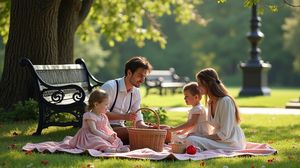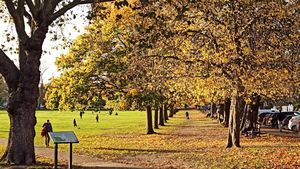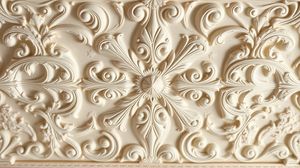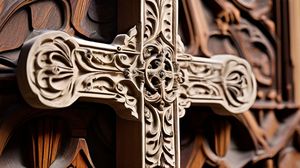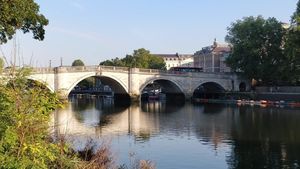
Kew Palace, a splendid 17th-century royal residence set within the enchanting Royal Botanic Gardens at Kew, encapsulates a fascinating slice of British history. Originally built as a merchant's house in 1631, it became a cherished retreat for King George III and his family, linking it forever to the nation's regal past.
This striking brick palace is the smallest of the British royal palaces, yet its historical significance is immense. Despite its modest size compared to other royal residences, Kew Palace holds an intimate charm and warmth, capturing the essence of a family home away from the public eye.
One of the intriguing aspects of Kew Palace is that it served as a silent witness to King George III's mental health struggles. Visitors can explore the rooms where the king spent time during his episodes and gain insight into the poignant personal challenges faced by the royal family.
The palace's kitchens are an unexpected delight, fully restored to their Georgian glory and offering a unique glimpse into the culinary world of the 18th century. These historic kitchens provide an understanding of the daily life and routines of those who served the royal family.
A quirky yet factual tidbit about Kew Palace is its distinctive façade. The structure was built using red brick in a Flemish bond design, which was quite innovative for its time and still stands out amidst the lush greenery of the gardens.
In the summer months, the palace's beautiful gardens are a treasure trove of rare and exotic plants, with flora collected from around the globe, echoing Britain's naval dominance and passion for botany during the Georgian era.
Kew Palace not only offers visitors a unique historical experience but also provides the opportunity to enjoy the tranquil beauty of the surrounding Kew Gardens, making it a perfect destination for history enthusiasts and nature lovers alike.

Making the Most of Your Visit:
Arrive early to truly enjoy the tranquility of Kew Palace. It's a small palace, and being there first thing allows you a more intimate experience, almost like having the palace to yourself. This quieter time lets you appreciate the details without the bustle of too many visitors.
Don't skip the Royal Kitchens! They're often overlooked, but they offer a fascinating peek into the everyday workings of a Georgian household. Plus, it's a great place to picture what life was like for those working behind the scenes at the palace.
Take note of the unique architectural details, like the Flemish bond brickwork on the palace's façade. It's an exceptional example of 17th-century design that stands out even today, giving the palace its iconic look.
Keep an eye out for the personal touches in the rooms where King George III and his family lived. These intimate details, like the furniture and decor, provide rare insights into their personal lives and struggles, making the visit both touching and educational.
If you're visiting during the summer, make sure to wander through the gardens around the palace. They're filled with rare and unusual plants, reflecting the historical plant-collecting craze of the British royals. It's a beautiful way to enjoy the horticultural history of the site.

Visiting Times & Costs:
Kew Palace is open to the public as part of the Royal Botanic Gardens, Kew. It typically operates seasonally, generally opening from April to September. However, it is advisable to check current opening times as they may change based on specific events or circumstances.
Visitors should be aware that the entrance to Kew Palace is included with the admission to Kew Gardens, which means there's no separate fee for the palace itself. The entry fee for Kew Gardens varies, and different ticket prices may apply for adults, children, families, and seniors.
Accessibility to Kew Palace is somewhat limited due to its historical nature. While the ground floor is accessible for wheelchair users, upper floors may pose challenges as there is no lift access. Accessible routes and assistance are available within Kew Gardens, but it's advisable for visitors with mobility impairments to seek further specific support details.

Address & Map:

Nearby:




